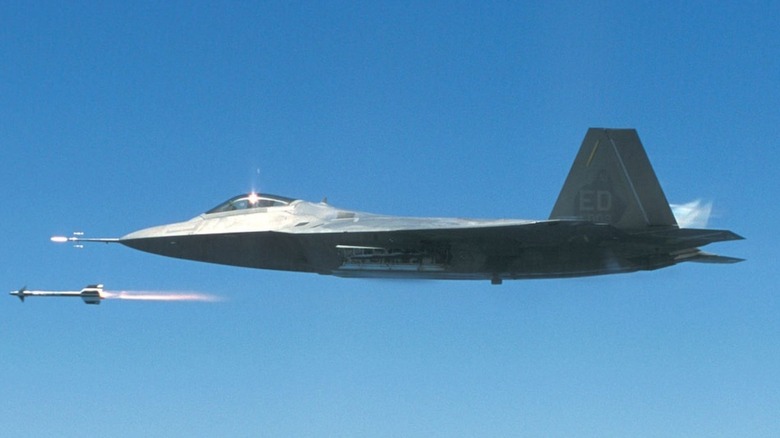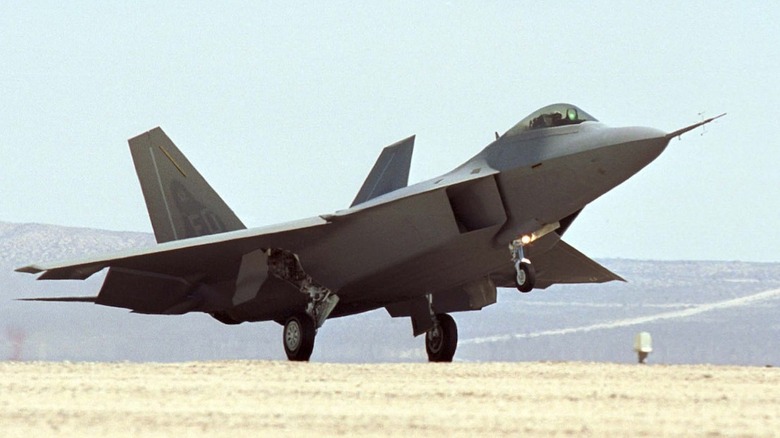Why The U.S. Air Force Wants To Retire The F-22 Raptor Fighter Jet
Following the recent attempts to trim iconic aircraft such as the F-15 Eagle, A10 Warthog, and the U2 spy plane from the U.S. Air Force's fleet, it appears that the F-22 may be next on the chopping block. Though only an early-production subset of the F-22, known as Block 20, is targeted for obsolescence. The Air Force is requesting that Congress retire 32 of the Block 20 F-22s, similar to a request that was made and denied last year.
The reason is that the F-22s are a fifth-generation aircraft, which some politicians consider too new to abandon. While that may technically be true, many of the Block 20 jets were only ever intended for training and other non-combat roles. Air Force Lt. Gen. Richard Moore states, "They will never be a part of the combat force. They don't have the most modern communications. They don't shoot the most modern weapons. They don't have the most modern electronic warfare capabilities."
On the opposite side of that argument is Rep. Rob Wittman, chairman of the House Armed Services Committee. "The F-22s that they want to retire—specifically to pay for NGAD—I think there's still utility left on those aircraft," Wittman told Defense One in an interview. He continued, "We're looking at what would you need to do to take that aircraft that's constructed as a trainer but still be able to use its fifth-gen capability in a combat classification."
The funds could be spent on newer technology
The Air Force says it can save almost $3.5 billion by the end of this decade — if the requested number of Block 20 F-22s are retired. To upgrade them to Block 35 specifications would require an additional $3.5 billion, totaling $7 billion that Moore maintains would be better spent on a new sixth-generation fighter jet program known as Next Generation Air Dominance.
Outside cost of doing the updates, Moore also cites staffing concerns. Lockheed-Martin would need to reallocate staff to modify the Block 20 F-22s, which could mean pulling resources from the construction and development of other jets, like the F-35.
The F-22 Raptor, is a single-seat, twin-engine fighter jet that flew for the first time in 1997. Perhaps its most noteworthy features are a special stealth coating that makes the fighter more difficult to detect, as well as its "supercruise" ability, which means it can fly long distances at supersonic speeds. Additionally, its Pratt & Whitney F119 engines are said to be simple to maintain, requiring just six tools that can be found at a common hardware store.
In an air-to-ground configuration, combat F-22s carry two 1,000-pound GBU-32 bombs and two AIM-120 radar-guided missiles. When configured for air-to-air combat, the armament consists of two AIM-9 heat-seeking missiles and six AIM-120 radar-guided missiles. In either case, a 20-millimeter Gatling-style rotary cannon with a 480 round capacity is always on board.

